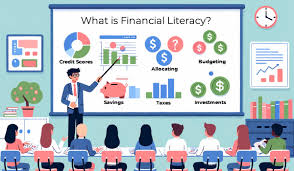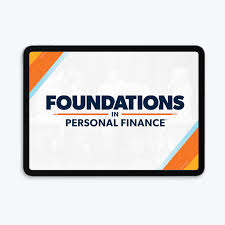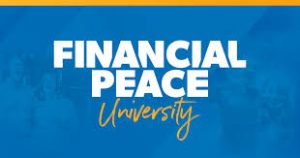Teaching financial literacy and credit management to teenagers is one of the most valuable gifts parents can provide. In today’s complex financial landscape, understanding money management has become as essential as basic literacy.
Recent studies show that only 16% of American teens are considered financially literate, highlighting a crucial gap in their education. As parents, we have the unique opportunity and responsibility to shape our children’s financial future.
This comprehensive guide will help you navigate the journey of teaching your teens about money management, credit, and financial responsibility. Whether your teen is just starting to earn money or preparing for college, these strategies will help build a strong financial foundation.
Skale Money Key Takeaways
Before diving deep into the specifics, here are the essential points you’ll learn:
- Financial literacy and credit education should begin early in the teenage years
- Real-world practice is more effective than theoretical learning
- Digital tools can make financial education more engaging for teens
- Building good credit habits early leads to better financial outcomes
- Consistent monitoring and guidance are crucial for success
Table of Contents
1. Understanding the Basics of Money Management
Money management forms the cornerstone of financial literacy and credit education. Before teens can grasp complex financial concepts, they need to understand the fundamental principles of managing money.
Key concepts to cover with your teen:
- Income tracking and documentation
- Basic budgeting principles and practices
- The importance of saving and compound interest
- Understanding fixed vs. variable expenses
Teaching tools you can use:
- Mint or YNAB (You Need A Budget) for visual budget tracking
- Excel spreadsheets for manual expense tracking
- Receipt collection and categorization exercises
- Weekly budget challenges
2. Introduction to Banking and Account Management
Modern banking goes beyond simple deposits and withdrawals. Teaching teens about banking systems helps them understand how money moves in the digital age.
Essential banking concepts to cover:
- Checking vs. savings accounts features
- Understanding bank fees and how to avoid them
- Mobile banking safety protocols
- The importance of maintaining minimum balances
Practical activities for banking education:
- Help your teen open their first student checking account
- Practice using ATMs safely and responsibly
- Set up automatic savings transfers
- Review monthly statements together
3. The Credit Foundation: Building Good Habits Early
Understanding credit is crucial for long-term financial success. Financial literacy and credit knowledge go hand in hand, especially as teens approach adulthood.
Core credit concepts to teach:
- How credit scores are calculated
- The impact of payment history
- Credit utilization ratios
- Different types of credit accounts
Credit education tools and resources:
- Credit Karma for educational purposes
- Credit score simulators
- Monthly credit report reviews
- Payment tracking calendars
4. Smart Spending and Saving Strategies
Teaching teens to make informed spending decisions while maintaining healthy saving habits is crucial for their financial future.
Key strategies to implement:
- Creating a wants vs. needs analysis chart
- Developing comparison shopping skills
- Setting up automatic savings plans
- Building emergency funds
Table: Recommended Teen Savings Allocation
| Purpose | Percentage | Example ($500) |
| Emergency Fund | 40% | $200 |
| Short-term Goals | 30% | $150 |
| Long-term Savings | 20% | $100 |
| Fun Money | 10% | $50 |
5. Digital Payment Systems and Online Safety
In today’s digital world, understanding electronic payment systems and maintaining financial security is crucial.
Essential digital payment topics:
- Mobile payment app security features
- Cryptocurrency basics
- Online shopping best practices
- Digital wallet management
Safety measures to implement:
- Two-factor authentication setup
- Regular password updates
- Transaction monitoring alerts
- Privacy setting reviews
6. Income and Earning Potential
Understanding income sources and earning potential helps teens develop a realistic view of money management.
Areas to explore with your teen:
- Different income streams
- Tax responsibilities
- Investment opportunities
- Career planning and income growth
Table: Teen Income Management Plan
| Income Source | Allocation | Purpose |
| Part-time Job | 60% | Savings & Expenses |
| Allowance | 20% | Discretionary |
| Gifts | 15% | Long-term Savings |
| Other | 5% | Emergency Fund |
7. Goal Setting and Financial Planning
Teaching teens to set and achieve financial goals helps develop long-term thinking and planning skills.
Key components of financial planning:
- Creating SMART financial goals
- Understanding time value of money
- Investment basics for teens
- College funding strategies
Goal-setting framework examples:
- Short-term: Saving for a laptop
- Medium-term: Building an emergency fund
- Long-term: Saving for college
- Retirement planning awareness
8. Common Financial Pitfalls and How to Avoid Them
Helping teens understand common financial mistakes can prevent costly lessons in the future.
Warning signs to watch for:
- Impulsive spending patterns
- Overreliance on credit
- Ignoring bank statements
- Falling for get-rich-quick schemes
Prevention strategies:
- Regular financial check-ins
- Setting spending limits
- Creating accountability systems
- Developing healthy money habits
Conclusion
Financial literacy and credit education are ongoing processes that require patience, consistency, and dedication from both parents and teens. By following this guide, you can help your teenager develop strong financial habits that will serve them throughout their life.
Remember that every teen learns differently, so adapt these strategies to fit your child’s learning style and interests.
Start early, be consistent, and make learning about money management an interactive and engaging experience. The financial habits formed during teenage years often persist into adulthood, making this education crucial for long-term success.
FAQ Section
When should I start teaching my teen about credit?
Start introducing credit concepts around age 14-15, focusing on basic principles before they’re eligible for credit cards.
How can I make financial literacy engaging for my teen?
Use real-world examples, interactive apps, and gamification to make learning about money management fun and relevant.
What apps are safe for teen banking?
Look for established banks with dedicated teen accounts or specialized apps like Greenlight or GoHenry.
How can I monitor my teen’s spending without being controlling?
Set up joint accounts with viewing access and establish regular, non-judgmental discussions about spending habits.
Should teens have credit cards?
Consider adding them as authorized users on your card first, then transition to a secured credit card when they’re ready.
How can I teach my teen about cryptocurrency and modern investments?
Start with traditional investment concepts, then introduce digital assets as part of a broader financial education.
What are the signs that my teen is developing good financial habits?
Look for consistent saving, thoughtful spending decisions, and interest in learning about money management.
How can I prepare my teen for college finances?
Create a college budget together, discuss student loans, and practice independent money management before they leave.
Additional Resources
Recommended Books:
- “The Simple Path to Wealth” by JL Collins
- “Why Didn’t They Teach Me This in School?” by Cary Siegel
- “The Psychology of Money” by Morgan Housel
Educational Websites:
- Khan Academy’s personal finance courses
- Investopedia’s teen financial education section
- The Federal Reserve’s education resources
Financial Literacy Apps:
- Greenlight for teen banking
- RoosterMoney for younger teens
- Zogo for gamified financial education
Community Programs:
- Local credit union workshops
- School-based financial literacy programs
- Junior Achievement programs
Remember, financial literacy and credit education are ongoing journeys. By implementing these strategies and utilizing available resources, you can help your teen develop strong money management skills that will benefit them throughout their lives.
Start early, stay consistent, and make learning about finances an interactive and engaging experience for your teenager.
![]()




